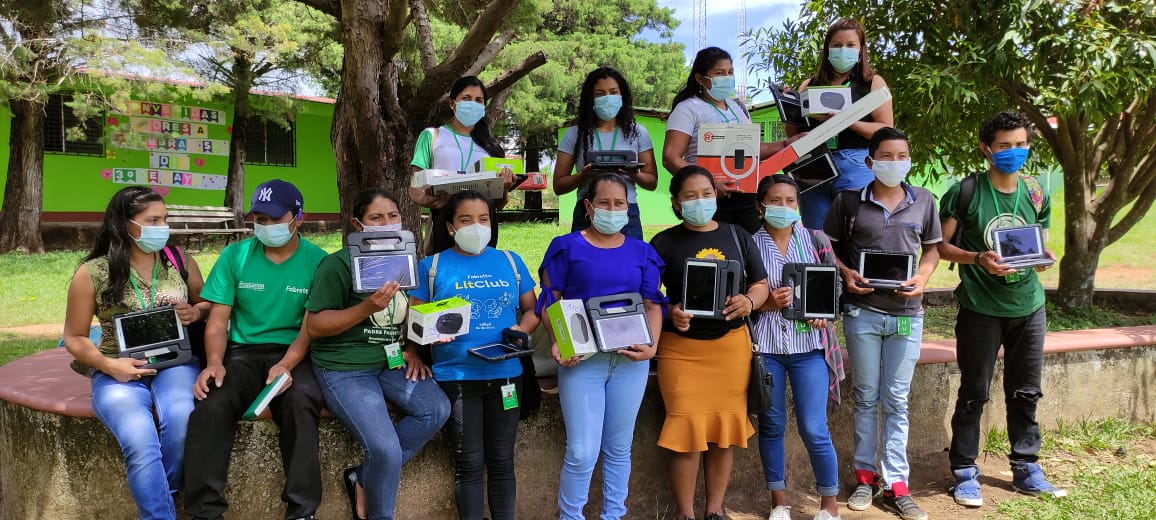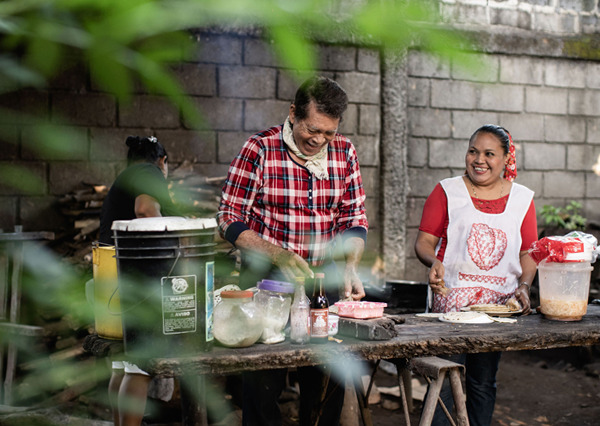6-18-21 | Success Story
Bringing new technology to Fabretto students and teachers has been a constant job. In 2018, digital education initiatives were undertaken, which, due to COVID-19 in 2020, developed with much more agility to ensure that education continued despite the distance and little—in some cases even zero—connectivity in rural areas.
The first step was taken with the teachers, training them on the use of platforms such as GSuite and all its tools. Thanks to donors like Tinker Foundation and IDB Lab, who have supported us since 2018, and FIA this year, it was possible to equip them with laptops, speakers, video projectors, and tablets that would allow them to create videos, assessments, and guides for their students.

Tablets delivered to teachers in Cusmapa, Madriz.
“Although the year meant many challenges, it was also a year of many opportunities because the teachers realized the importance of using technological tools and how to take advantage of them to reach our students by any ways possible on a digital level,” our digital education coordinator, Rochester Cáceres, tells us.
Fact ✎
100% of our SAT tutors have access to information and communications technology tools.
At the same time, the circumstances of each student were evaluated to devise actions that would be adjusted for those who have limited access to a mobile device and internet, as well as for those who, due to their geographical location, don’t have that possibility. As a next step, a B-Learning—or blended learning—modality was implemented, creating a balance between studying with digital tools and face-to-face sharing between tutors and students.
In this process, Fabretto strengthened two instruments that had been developed since 2018. The first one, the fabretto.edu.ni platform, accessed by 743 SAT students to complete their courses; and as a complementary tool, Fabretto Educa, a YouTube channel with videos about beekeeping, coffee growing and processing, passion fruit crops, and even educational tutorials for teachers.
Despite all these initiatives implemented to bridge part of this digital gap, Fabretto still had a challenge: how to adapt it and bring it to students who don’t have internet or smartphones at home?
The constant donor support allowed tutors and students to make use of laptops and 279 tablets with courses and pre-recorded content that could work offline from home or using the local network in Fabretto centers.

Tablets delivered to SAT students from Mozonte, Nueva Segovia.
These children and youth are maximizing the resources they have available and taking advantage of it as a tool that they can use not only for leisure but also for productivity. Facebook and WhatsApp have become very useful apps to create virtual classrooms with their tutors and classmates from a distance and to continue with their projects on a regular basis.
“We have managed to develop in students the ability to self-learn with these initiatives. They already have the capacity and level of demand to request material digitally because it’s faster to execute assignments and to receive instant feedback,” says Rochester.
The task of bringing digital education to our students and teachers in the most limited areas continues and with your contribution, we can speed up more steps.






